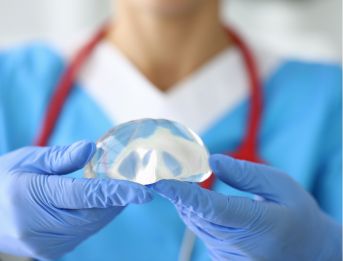A popular myth circulating around out there is that implants must be replaced every 10 years. This is simply not true. Behind every myth there is a shred of truth (or so they say). Although you do not have to pencil in an implant switch automatically every 10 years there are some situations where you may need or want to have revision surgery after your breast augmentation.
Implants are manufactured devices just like your TV or the tires on your car. Eventually they may wear out. The rupture rate on most implants currently on the market is thought to be around 1% per year cumulative. So the risk is small initially, but slowly increases with time. If you are very young when you get a breast augmentation you have a reasonable chance of the implants rupturing by the time you are older. Unfortunately, no one can predict if and when they will rupture. It may happen after 5 years, 20 years or never. If they do rupture they need to be replaced.
Another reason for needing revision surgery after breast augmentation has nothing to do with the shape of the implants and everything to do with the shape of your breasts. Pun intended. I’m talking about the actual shape and the condition of the tissues. As you age, have babies, breast feed, gain weight, lose weight, etc. your breast skin loses elasticity. After breast feeding you may notice a decrease in breast tissue volume. If the skin does not contract sufficiently your breasts may appear deflated. Also, the ligaments that support the weight of the breast (Cooper’s ligaments) stretch and weaken. These things result in breast sagging. Plastic surgeons call this ptosis (pronounced toe-sis). This happens whether or not you have implants. However, implants add weight to the breast and can accelerate the stretching to some degree, especially larger implants. There is not an exact cut off, but implants larger than 400-500 cc are probably more likely to do this.
When the condition of the tissues deteriorates the shape of your breasts goes too. With an implant in place the tissues of the breast can sag lower on the implant creating a “double bubble” or “snoopy-nose” deformity. This is a problem cosmetically, but only needs to be fixed if it bothers you. The change will probably not be apparent in clothing. If you are happy how things look in a bra you may not want to do anything. If you are unhappy with the appearance a mastopexy (breast lift) is the solution. If you have had your implants in place for a while (more than five years) it would not be unreasonable to get new implants at the same time. If they are un-ruptured, however, you do not have to exchange them.
We have discussed a scenario where you need surgery (rupture) and a scenario where you may want surgery (sag). Capsular contracture is a little of both. Capsular contracture occurs when the normal thin scar capsule around your breast implant tightens. This is not a black or white situation—it’s shades of gray. You may have very mild capsular contracture where the implant feels more noticeable, but the breast looks okay. You probably would not want surgery for this. If it progresses, the breast may feel more firm and the shape may become distorted. If it gets to that extreme you don’t have to have surgery, but you will probably want it. Sometimes in severe capsular contracture the tightness is very uncomfortable. In that case you need surgery.
It is not pleasant to consider the possibility that you may need revision surgery in the future. Some patients have thinner tissues or more sag initially and are more likely to have these problems. We always point these factors out to our patients before surgery so that they can weigh the pros and cons. Overall our breast augmentation patients are among our happiest. When good decisions are made about implant size and proper techniques are used you can get a great result with maximal longevity.

